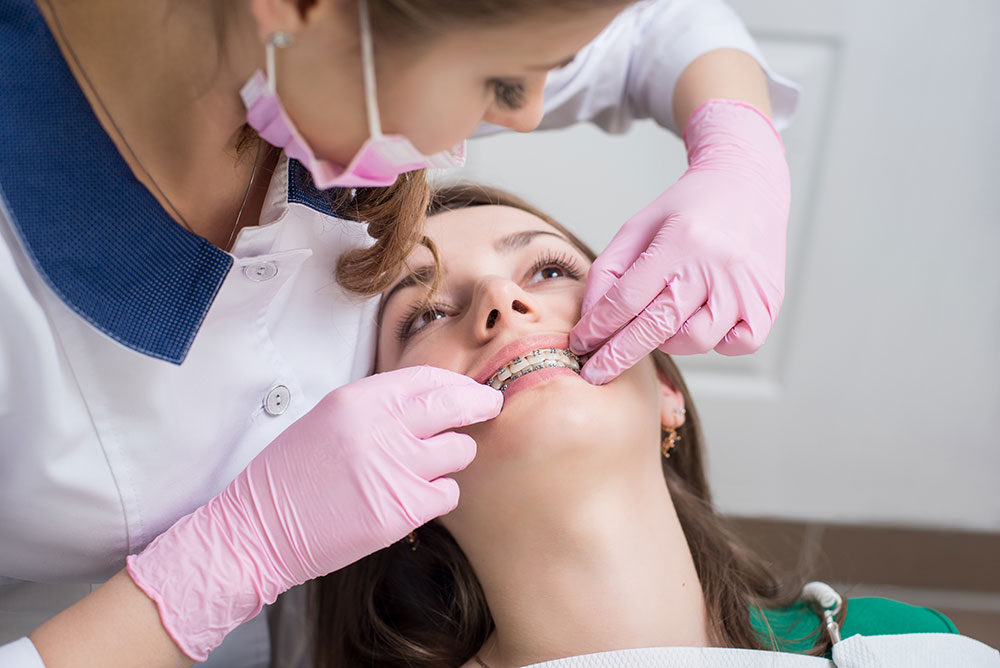Legacy Orthodontics for Dummies
Legacy Orthodontics for Dummies
Blog Article
How Legacy Orthodontics can Save You Time, Stress, and Money.
Table of ContentsUnknown Facts About Legacy Orthodontics7 Simple Techniques For Legacy OrthodonticsThe Ultimate Guide To Legacy OrthodonticsRumored Buzz on Legacy OrthodonticsHow Legacy Orthodontics can Save You Time, Stress, and Money.
At Advanced Orthodontics, we offer individuals with a all natural treatment experience. Furthermore, we use flexible treatment routines, adaptable repayment options and a fun, enjoyable experience. clear braces. Telephone call ( 480) 357-4900 today to learn more and timetable a consultation.An orthodontist is a dental practitioner educated to detect, avoid, and treat teeth and jaw irregularities. They deal with existing problems and are educated to recognize problems that might create in the future. Orthodontists collaborate with individuals of every ages, from children to grownups. People commonly connect a best smile with health.
Malocclusion, or misaligned teeth, can cause dental concerns, consisting of dental cavity, gum disease, and difficult or painful eating. Not everybody is birthed with straight teeth. If you have a poor bite or large rooms between your teeth, you might desire to seek advice from a dental professional focusing on orthodontic treatment.
The Facts About Legacy Orthodontics Revealed
( Image Credit Scores: DigitalVision/Getty Images) Orthodontists make use of fixed and removable oral devices, like dental braces, retainers, and bands, to change the setting of teeth in your mouth. Orthodontic therapy is for oral problems, consisting of: Misaligned teethBite problems, like an overbite or an underbiteCrowded teeth or teeth that are as well much apartJaw misalignmentThe goal of orthodontic treatment is to improve your bite.
A healthy and balanced bite ensures you can eat, eat, and speak properly. While you could think of orthodontists as generally for kids or young adults who need dental braces, they can correct dental problems at any type of age. Orthodontists participate in university, dental college, and orthodontic school. After college graduation, they spend 2 or 3 years in an orthodontic residency program.
, yet not all dental practitioners are orthodontists. They concentrate on two areas: How to properly and safely move teeth Just how to effectively lead growth in the teeth, jaw, and faceOnce an orthodontist has actually finished training, they have the choice to end up being board certified.
What Does Legacy Orthodontics Mean?
Misalignment, or malocclusion, is the most usual reason people see an orthodontist. It is hereditary and is the outcome of size differences in between the upper and reduced jaw or between the jaw and teeth. Malocclusion causes tooth congestion, a misshapen jaw, or irregular bite patterns. Malocclusion is usually treated with: Your orthodontist affixes metal, ceramic, or plastic square bonds i was reading this to your teeth.
If you have just minor malocclusion, you might be able to use clear dental braces, called aligners, rather than standard dental braces (https://www.sooperarticles.com/authors/788744/brian-mccune.html). Some individuals need a headwear to aid relocate teeth right into line with stress from outside the mouth. After dental braces or aligners, you'll need to wear a retainer. A retainer is a customized tool that keeps your teeth in place.
They can develop added room in the mouth without having to draw teeth. Orthodontists utilize cables, surgical screws, or plates to support your jaw bone.
You may need to see an orthodontist if you have: Crowding or otherwise adequate space for all of your teethOverbite, when your upper teeth come over your bottom teethUnderbite, when your bottom teeth are as well far forwardSpacing or concerns with gapsCrossbite, which is when your top teeth fit behind your base teeth when your mouth is closedOpen bite or an upright gap in between your front base and upper teethMisplaced midline, when the center of your bottom and upper teeth don't align Dealing with an oral malocclusion can: Make biting, eating, and talking easierImprove the proportion of our face and your overall appearanceEase discomfort from temporomandibular joint conditionsSeparate your teeth and make them simpler to clean, aiding stop tooth decay or cavities It's frequently a dentist that first notifications misaligned teeth during a regular examination.
The Ultimate Guide To Legacy Orthodontics

During your initial orthodontic appointment, you'll likely have: A dental examPhotos taken of your face and smileDental X-raysPanoramic (360 degree) X-rays of your face and headImpressions to create molds of your teethThese examinations will aid your orthodontist recognize exactly how to wage your therapy. leesburg orthodontist. An orthodontist is a dental professional that's had training to treat your teeth and jaw
Orthodontists may execute surgical procedure, exams,X-rays,and more to assist you attain a much more comfy, healthier smile. An orthodontist is concentrated on your bite, so something like a cracked tooth would be taken care of by a dental professional. Orthodontists are dental experts but not all dental practitioners are orthodontists. Orthodontists are focused on your bite, or the way your teeth fit with each other, and the straightness of your teeth.
Ever wondered exactly how celebs constantly appear to have perfectly lined up teeth? Orthodontists are dental experts who concentrate on fixing abnormalities in the teeth and jaws.
The Only Guide for Legacy Orthodontics

While dental braces are the most typically acknowledged orthodontic treatment, orthodontists have a varied toolkit at their disposal. The details strategy picked depends upon the extent of the instance, the individual's age, and specific choices. These reliable dental braces make use of a system of brackets bonded to the teeth and attached by cables.
Clear aligners, like Invisalign, are a preferred choice for individuals looking for a much more very discreet therapy option. These removable trays are custom-made to gradually move the teeth's position. Headgear may be used together with braces or aligners to apply additional targeted forces, particularly for dealing with jaw inconsistencies. In cases of narrow jaws, palatal expanders can be made use of to produce area for appropriate tooth placement.
Report this page